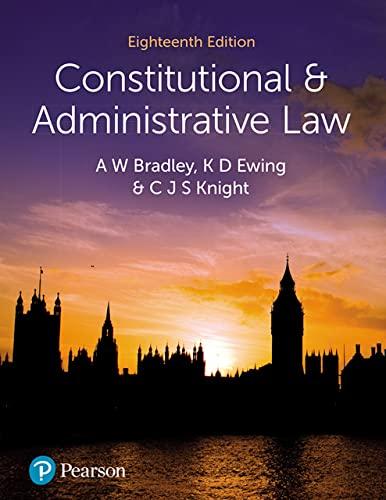Question
Divorce Equalization Payment Calculation - Case Study Equalization - A Case Study Leslie a 49-year-old School Teacher and Brian, a 51-year-old Plumber, are really hoping
Divorce Equalization Payment Calculation - Case Study Equalization - A Case Study Leslie a 49-year-old School Teacher and Brian, a 51-year-old Plumber, are really hoping to avoid a lengthy and protracted negotiation. They both agreed mediation was the best fit for them, if only for the sake of their children - 14-year-old Michelle and 17-year-old Maradith. Brian and Leslie experienced the devastating effect of Leslie's sister's bad divorce two years earlier. He earns approximately $87,000 with his Plumbing Business. She earns $93,000 per year as a schoolteacher. The couple owns a home jointly with $1,250,000 of equity. The balance of the mortgage is $550,000. Non-Joint Assets Brian's Plumbing Contracting Business has a pre-tax value of $135,000. He also has an RRSP with a pre-tax value of $216,600. The pre-tax value of the Wife's Teacher's Pension is $600,000. They each have cars and individual bank accounts. Debts (Liabilities) Brian's total liabilities are $426,845, while Leslie's debts are $467,845. Brian's debts include his share of the mortgage and the joint RBC Visa Credit Card. Also, his car loan. Leslie's debts include her share of the mortgage and the joint RBC Visa Credit Card. Also, her car loan. They each have other obligations related to their more considerable assets' valuations. For Leslie, a $114,000 contingent tax liability connected to her pension is accounted for in her Net Family Property. Brian has a $45,000 contingent tax liability associated with his RRSP and business valuation. Consider in your response the following: 1. What is equalization payment 2. Calculate the NFP - Net Family Property to assess which of the couple must pay the equalization amount (show all working) ESTATE PLANNING About the client: Life Stage: Brink of Retirement With 2 Children Employment Status: Business Owners Household Income Range: $1m $1.5m Business Revenue Range: $300m+ Asset Summary: Company worth approx. $1billion, six properties approx. $35m, vehicles worth 300k Liability Summary: Loans $3m Live in Toronto Two children: Peter (age 29, married); Carter (age 25, married) One grandchild (11), and one on the way William (Bill) and Stacy Maynard are a married couple in their sixties, approaching retirement. They have a net worth of $1 billion. Bill started an IT firm, Maynard Software. The Maynard's own the business together and hope to sustain the company as a family business. Both of their children studied computer science and worked for the family company. The couple has thought about their future significantly, including protecting future generations and making charitable donations. They did forget one crucial plan, however, an estate plan. They have an existing plan, but it is outdated. They have discussed updating the plan, and they know what they find essential, but they have not taken the time to incorporate these new ideas into the existing plan. Since the formation of their initial plan, the income has grown, and they fear potential tax issues can arise. Typically, the Maynards have had an attorney draw up basic estate planning documents, such as revocable trusts, but have doubts that the structure of their estate plan aligns with their current situation. When the documents were drawn, the couple only had their first child and did not plan on having a second. Now that their children are married, and have one grandchild, with another on the way, they would like to incorporate their children's spouses and grandchildren in their plan. Their current grandchild, 11-year-old Megan, has a promising future as a ballet dancer, so they would like to keep in mind education for the future and education of generations to come. Also, as their estate grows, they are concerned about federal and provincial estate tax exposure. They have already put their children through college, so that is no longer a concern. Their current monthly household expenses sit around $25,000 a month after tax. Currently, the couple is in the 35% tax bracket. Needs: Identify what you believe to be the needs of this family and prepare the estate plan in detail. Identify each step of the planning process. You are the advisor so whichever direction you take in assessing what you believe to be their needs, you must defend it in your response.
Step by Step Solution
There are 3 Steps involved in it
Step: 1

Get Instant Access to Expert-Tailored Solutions
See step-by-step solutions with expert insights and AI powered tools for academic success
Step: 2

Step: 3

Ace Your Homework with AI
Get the answers you need in no time with our AI-driven, step-by-step assistance
Get Started


